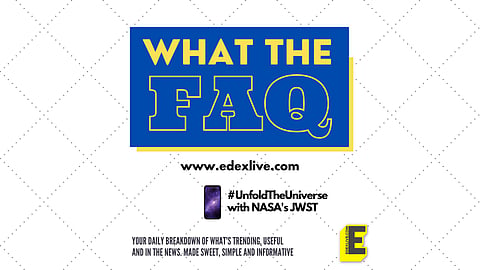

NASA's James Webb Space Telescope (JWST) has created quite a stir. The images from the largest optical space telescope have gone viral on social media and NASA says that these are the most powerful infrared images of the universe. Here's all you need to know about the James Webb Telescope and how it has helped #UnfoldTheUniverse.
What is the James Webb Space Telescope?
The JWST was developed by the National Aeronautics and Space Administration (NASA) in collaboration with the Canadian Space Agency (CSA) and the European Space Agency (ESA) and is named after James E Webb, who was the administrator of NASA from 1961 to 1968. The telescope was launched into space in December 2021 and the first images from the JWST were released by NASA on July 11, 2022.
Why is it better than other space telescopes?
The telescope is more powerful than the Hubble Space Telescope, thanks to its higher infrared resolution and sensitivity. The JWST's primary mirror is larger when compared to other telescopes such as the Spitzer Space Telescope. It is also equipped with better detectors.
What are some of the images released by NASA from the JWST?
In all, NASA has released five images captured by the JWST in what it says is the first wave of full colour scientific images and spectra gathered at the observatory. It has said that these images mark the beginning of the JWST's exploration of the infrared universe. One of the images depicts the spectrographic data of the exoplanet WASP-96b, which is 1,150 light-years away from Earth. The telescope was able to capture "the distinct signature" of water in the planet's atmosphere, declared NASA. Another image is that of the galaxy cluster SMACS 0723. It took billions of years for the light from this galaxy to reach the telescope and NASA has said that some of the youngest galaxies visible in the image might be just a billion years away from the Big Bang that created the universe.
What aspects of the universe do these images help us understand?
One of the images also depicts a star-forming region in the Carina Nebula. The image that looks like the painting of a landscape can help scientists understand the process of star formation better. Yet another image that can help trace star births and deaths is that of the Southern Ring Nebula, where a dying star and a younger star are locked in a tight orbit, encapsulated in the multiple rings of clouds of gas released by the dying star. Scientists can also explore interactions between galaxies thanks to the image of the Stephan's Quintet, which is a group of five closely situated galaxies. The clarity of the images from the JWST can help scientists study how these galaxies contribute to the evolution of others. In the image itself, NASA says that shockwaves resulting from one of the galaxies smashing through the cluster are captured.
